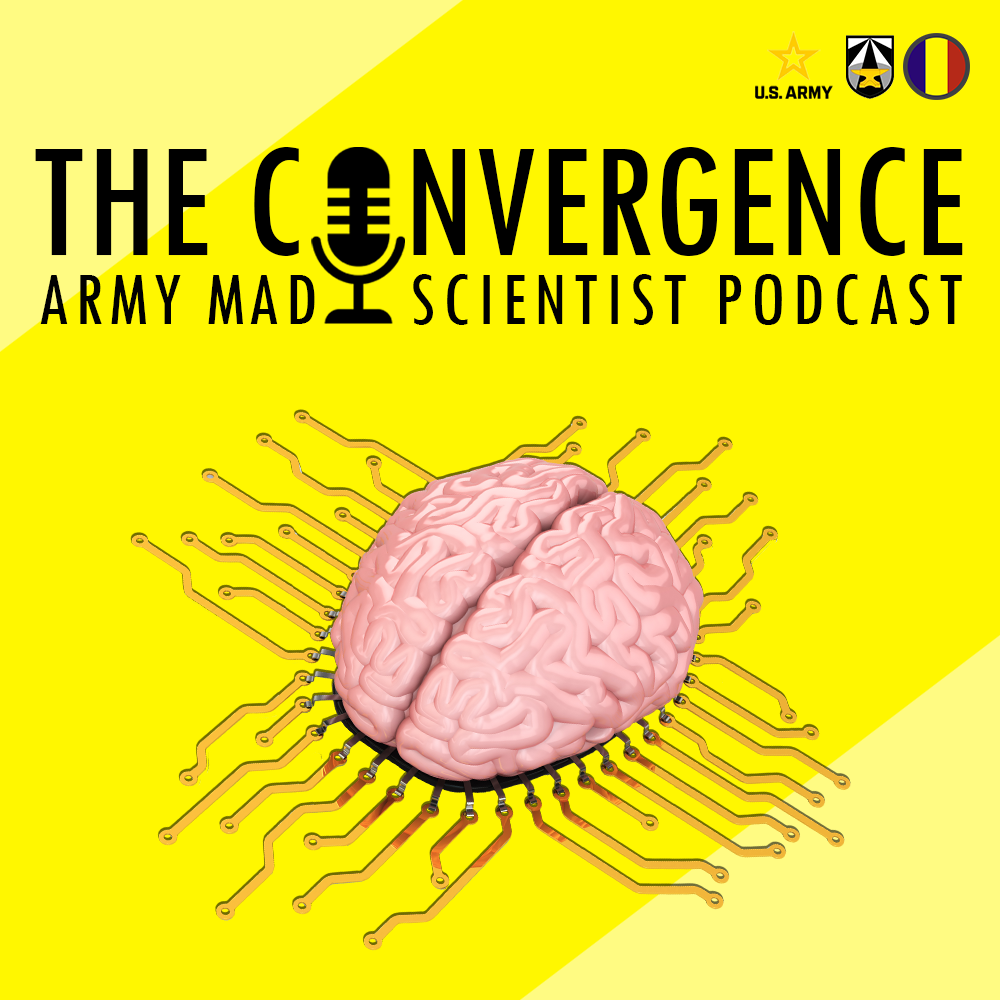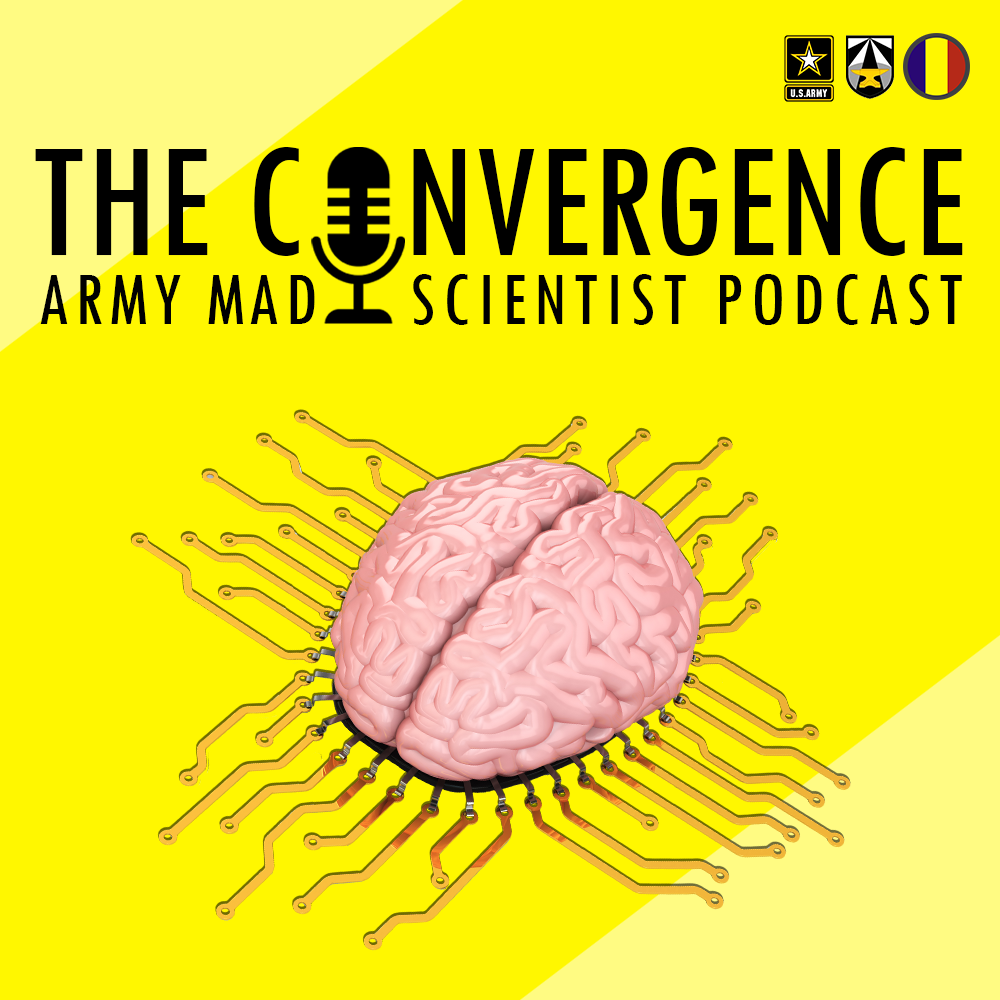[Editor's Note: Crowdsourcing and Storytelling are two of Army Mad Scientist's most effective tools in exploring future possibilities regarding the Operational Environment. Crowdsourcing helps us harvest ideas, thoughts, and concepts from a wide variety of interested individuals, helping us to diversify thought and challenge conventional assumptions. Storytelling — creative fictional writing and narrative building — helps us to explore how concepts, technologies, and other capabilities could be employed and operationalized. Together, they help us to effectively source, then impart knowledge about future possibilities — creating a network of people with a shared understanding of potential futures.
In today’s episode of The Convergence podcast, we sit down with John "Grant" Rafter to discuss the Air Force Futures’ mission, the recently published Air Force Global Futures Report: Joint Functions in 2040, and the associated AFGFR Vignette Writing Contest (see more about this in the Announcement at the bottom of today’s post) — Read on!]
[If the podcast dashboard is not rendering correctly for you, please click here to listen to the podcast.]
John "Grant" Rafter is the Branch Chief for Futures and Foresight in Air Force Futures. He also has experience with the U.S. Secret Service, the Office of the Secretary of Defense for Policy as the Regional Director for Maghreb, and with the UN Development Programme in Myanmar. Mr. Rafter has a B.A. in English from Dartmouth College, a J.D. from the University of Washington School of Law, and an M.P.P. from the Harvard Kennedy School focusing on Management, Leadership, and Decision-Making in International Organizations. He is finalizing an additional master’s degree with a focus on China.
In our latest episode of The Convergence podcast, Army Mad Scientist sits down with John "Grant" Rafter to discuss the Air Force Futures‘ mission, the recently published Air Force Global Futures Report: Joint Functions in 2040 (aka AFGFR), and the associated AFGFR Vignette Writing Contest — seeking to crowdsource engaging, plot-driven stories that illustrate a scenario from one of the many futures described in the AFGFR. The following bullet points highlight key insights from our conversation:
As the world becomes more volatile, uncertain, complex, and ambiguous (VUCA) – especially post-COVID – the demand for foresight increases. Foresight excels in a VUCA environment as linear projections become less certain and timelines increase. Foresight helps organizations like the Joint Force obviate and avoid strategic surprise.
The AFGFR explores the seven Joint Functions for warfighting — command and control, information, intelligence, fires, movement and maneuver, protection, and sustainment — through four alternative futures: Growth, Transformational, Constrained, and Collapsed. The AFGFR examined these competing Operational Environments and how the trends and forces within each impacted mission sets for the Air Force, as well as the DoD at large.
The Joint Functions for warfighting are cross cutting (across not only specific military branches, but the entire Joint Force), proving to be the best lens for utility and relevance. Using modified foresight methodologies, AF Futures was able to crowdsource and condense the expertise from hundreds of foresight practitioners – a diverse group from across Government agencies, academia, and Allied and Partner nations – into 32 pages of analysis.
The AFGFR and associated four worlds help planners to assess how well their plan, team, or organization functions (or not) in any of the proposed futures. They can then identify weaknesses or opportunities in their concepts and refine as they go.
The report identified six key trends overall, with the scope, scale, and speed of computing; the myth of sanctuary due to cyber, bio, and space; and economic interconnectedness – globalization and deglobalization – as the most impactful.
The future exists in multiple stages at once. Identifying the edge of potential futures helps the Force know the left and right bounds and prepare for both sides of the extremes. If we are proactive, we can shape the future we want to see.
Stay tuned to the Mad Scientist Laboratory for our next episode of The Convergence on 13 July 2023, when we’ll talk with we talk with Drs. Keith Brawner and Bill Swartout from the University of Southern California’s Institute for Creative Technologies (USC ICT) — a DoD-sponsored University Affiliated Research Center (UARC) focused on immersive technology, simulation, human performance, computer graphics, artificial intelligence and narrative — about the Center for Generative AI and Society within ICT, their research into large language models, and their vision of the future of training through emerging technologies.
If you enjoyed this post, check out the following content:
China Landing Zone content on the TRADOC G-2's Operational Environment Enterprise public facing page — including the BiteSize China weekly topics, ATP 7-100.3, Chinese Tactics, People’s Liberation Army Ground Forces Quick Reference Guide, How China Fights and associated podcast, and more!
Russia Landing Zone content on the TRADOC G-2‘s Operational Environment Enterprise public facing page — including the BiteSize Russia weekly topics, our How Russia Fights 2.0 post and associated podcast , and more!
The Operational Environment (2021-2030): Great Power Competition, Crisis, and Conflict, along with its source document
Four Models of the Post-COVID World
The Future Operational Environment: The Four Worlds of 2035-2050
Task Force Wolf, Task Force Wolf, Redux and associated podcast, with proclaimed Mad Scientist LTC Daniel Gomez
Alternate Futures 2050: A Collection of Fictional Wartime Vignettes, by LTC Steve Speece
The Battle of Rioni River Valley: A Story of Future Warfare in 2030, by MAJ James P. Micciche
Kryptós, by proclaimed Mad Scientist CPT Katherine Hathaway
Fifth Generation Combat: SubTerranean Ops in Singapore, by the Radio Research Group
Weaponized Information: One Possible Vignette and Three Best Information Warfare Vignettes
Two Vignettes: How Might Combat Operations be Different under the Information Joint Function? by proclaimed Mad Scientist Dr. Christopher Paul
Insights from Army Mad Scientist’s Back to the Future Conference
Announcement: AFGFR Vignette Writing Contest — Our Sister Service partners in the U.S. Air Force (USAF) are proud to present the Air Force Global Futures Report: Joint Functions in 2040, published by Headquarters Air Force A5/7 (aka Air Force Futures). This report is the USAF’s analogue to the U.S. Army Futures Command’s AFC Pamphlet 525-2, Future Operational Environment: Forging the Future in an Uncertain World 2035-2050.
The AFGFR highlights four future operating environments and major implications for the future force. To bring these operating environments to life, Army Mad Scientist is partnering with the Air Force Futures’ Foresight Team to conduct the AFGFR Vignette Writing Contest — based on the report’s four futures and the exploration of the Joint Functions. We are seeking vignettes with characters that make the future operating environments and associated Joint Functions within come to life!
The AFGFR Vignette Writing Contest is open to all — anyone can submit an entry. Entries should be between 1500-2500 words in length, and are due NLT 01 September 2023. To learn more about the contest and how to submit your entry(ies), click >>>> here <<<< and read the contest flyer!
Disclaimer: The views expressed in this blog post do not necessarily reflect those of the U.S. Department of Defense, Department of the Army, Army Futures Command (AFC), or Training and Doctrine Command (TRADOC).

[Editor’s Note: Grizzled readers of the Mad Scientist Laboratory will recall their well-thumbed copies of the forty-year-old FM 100-2 series, The Soviet Army. U.S....

MAJ Joe Littell is a U.S. Army officer and researcher assigned to the Army Cyber Institute at the United States Military Academy. He has...

CAPT George Galdorisi (USN-Ret.) is a career naval aviator whose thirty years of active duty service included four command tours and five years as...